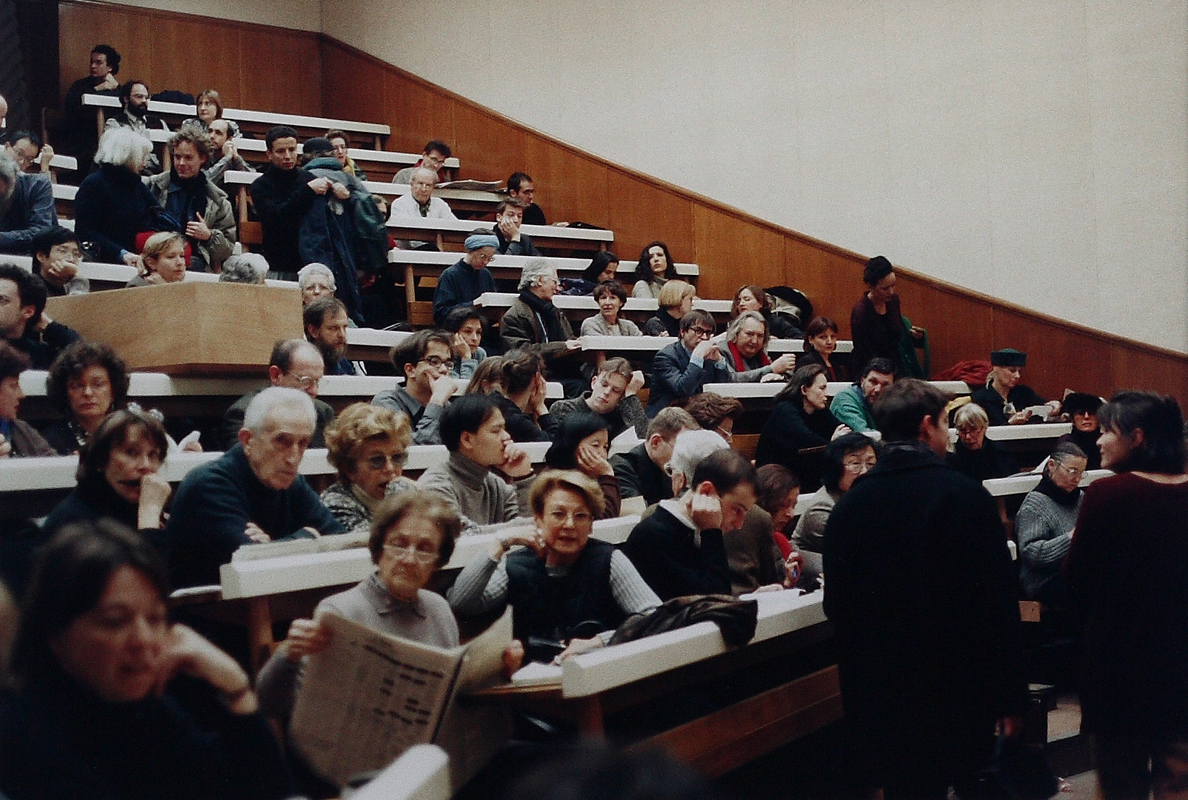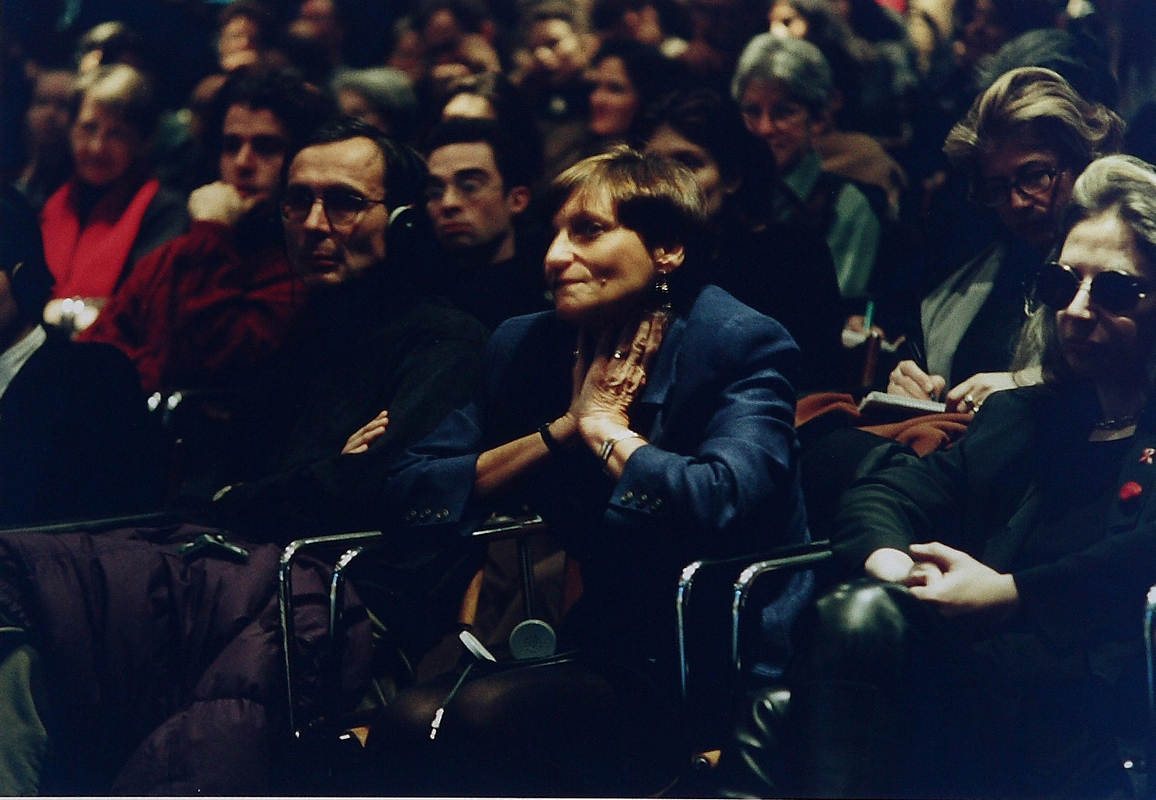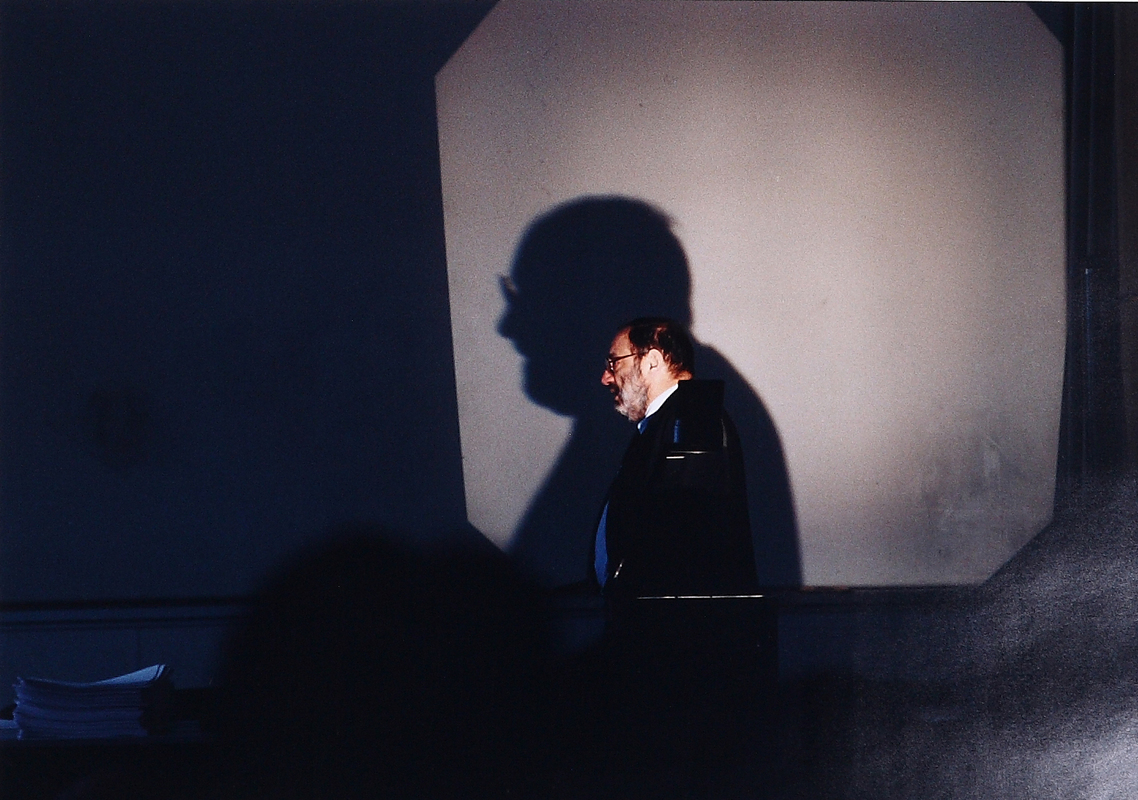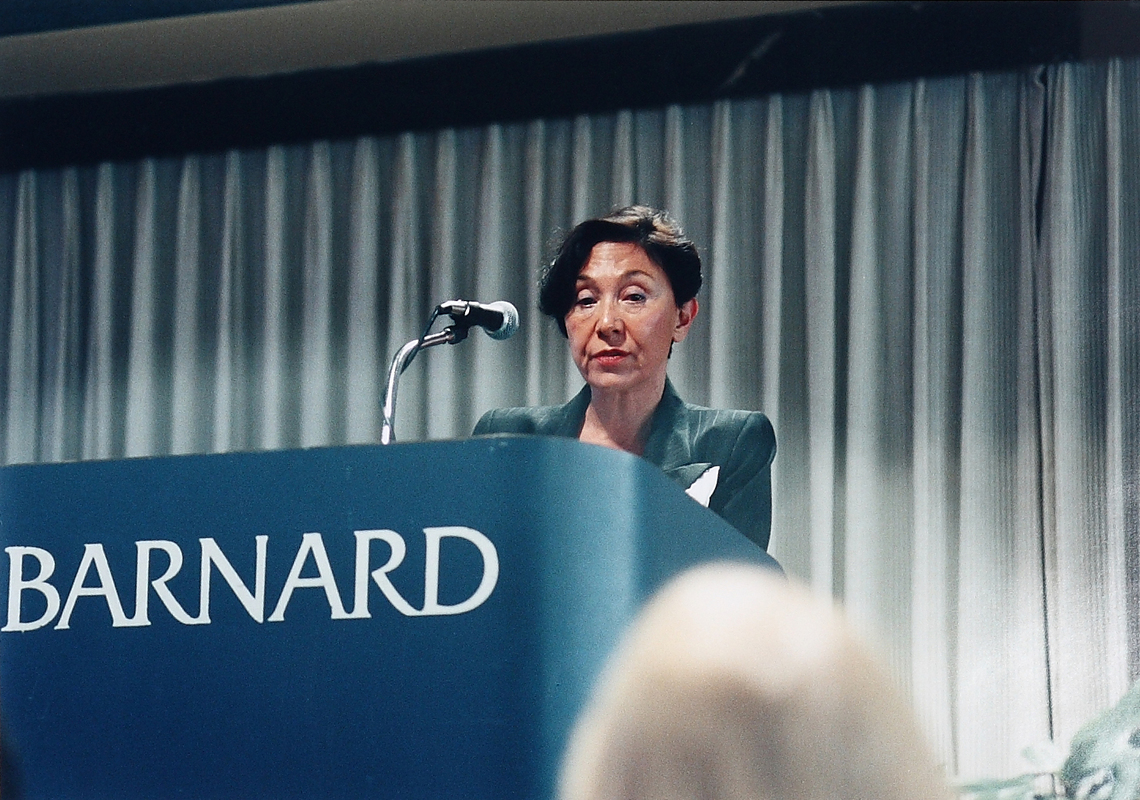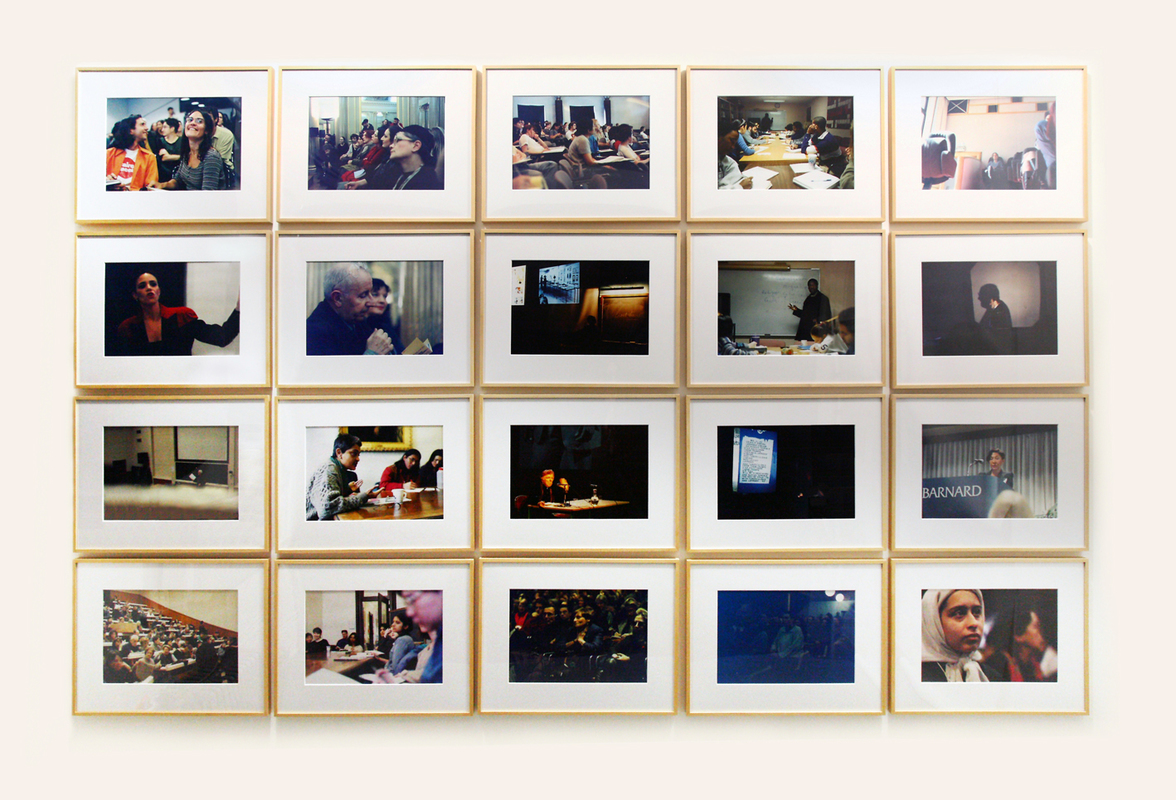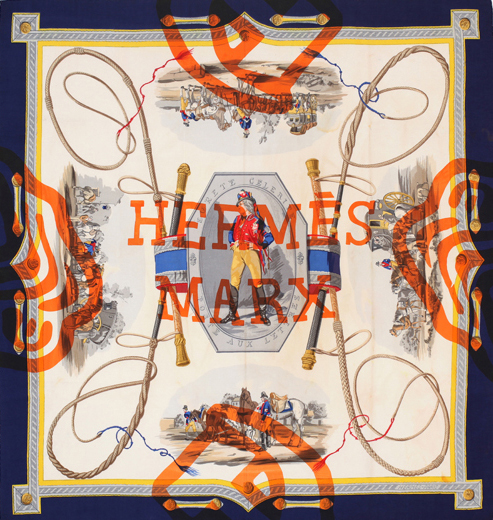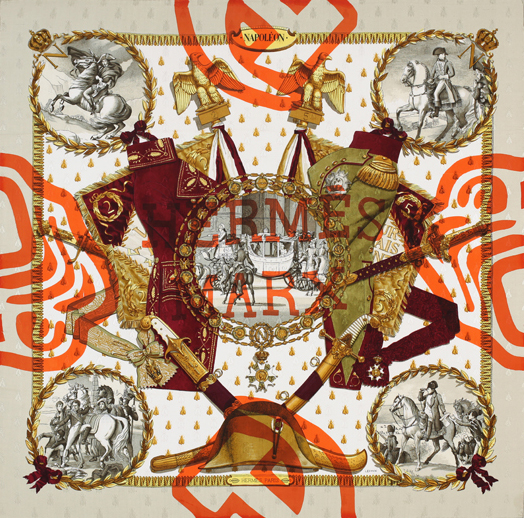Rainer Ganahl
- Artist Statement
- Curator Statement
- zingmagazine project
- Website
Artist Statement
Seminars and Lectures
My S/L is an ongoing project attempting a “representation of intellectuals” within their working environment. Since 1995, I have been auditing classes and attending public lectures of interest to me and taking photographs from the subjective position of a participant.
These photographs are an observation of a field, namely critical cultural education, that is important for the productive reproduction of society. Education and knowledge are sites of contest and conflict as well as mirrors of tensions and fractions in society. Usually, they reproduce biased structures of privilege through high cost, selective access, and uneven distribution of material and informational resources. Education, pedagogy and knowledge are embedded in an ideological setting of the public and private sphere and often contradict their own content and liberal drive.
It is no surprise, then, that I am encountering a variety of contradictions. As much as I am interested in the type of knowledge I am auditing, knowledge itself doesn’t usually show in a picture, with the exception of visual materials presented by the lecturer. It remains indexical and hinted at only through the title of the class or lecture. My visual records remain open to a variety of readings and don’t allow for knowledge consumption.
I am not interested in rendering these sometimes well recognized figures and their intellectual practices spectacular but, after all, the archive contains intellectual celebrities, and sometimes famous and spectacular visual material in the form of slide projections or films. A spectacularization of knowledge and its institutions is something more often undertaken by these institutions themselves, since they are mostly now inscribed in the competitive logic of the educational industry and performing outside their usual confines. I try to also address these questions, as well as the question of the overlapping of fields: theory in the arts, in architecture, etc.
My fragmented and somehow dilettante encyclopedia of S/L photographs doesn’t just map my interests, but also my local movements and presence. The list of the visited seminars and lectures can be read as an intellectual as well as topological travel log.
This ongoing S/L photo series is part of a larger body of work called, Reading Seminars, Studying of Foreign Languages, Writing, etc, that I have been developing for more then a decade concerning similar issues: language and knowledge—its media and power—and the struggle of a critical public sphere.
Hermes/Marx
The synthetic silk scarves for 99 cents would not be even worn by people who belong to the economic group of the wealthiest 10 % though they approve of Hermes whose 90×90 cm foulards resemble real estate square foot prices. In the aftermath of the 2008 financial crisis this wealthy group got off to a much better start than those at the opposite end of the financial spectrum. Many people so far have never gotten out of the crisis to this day, but luxury consumption has widely expanded and gained in the recent years. Hermes is most certainly a high end retailer where getting the most desired scarves is not always easy. Hermes products of the best designs are sold out quickly if they ever even make it to the special few boutiques in a few metropolises where they are sold without ever encountering a “for sale” sign or making it to a discounter. The limited edition bags priced at many thousands of dollars are rarely sold to just anyone walking in with the money but are even reserved for the elected few who have connections or belong to the who’s who of media and glamour. But you can always make it on a waiting list and will be informed when new products arrive at the shop.
Hermes is particular in many ways, including the fact that it stays a family business and rejects big capital. They produce everything they need in the traditional way and oversee production in France and overseas. Given the low volume, the high quality of the ware and the complicated, traditional not fully automated way of producing, the pricing seems more justifiable than it appears and I am myself fascinated and intrigued by their colors and their exotic and orientalizing designs. Hermes draws most of its designs from France’s colonial past and glorifies it, something that gives it the false aura of having produced phantasmagoric designs already established since the early 19th century. To my surprise, I found out that the foulard line only was introduced in 1937, i.e. the real beginning of the end of colonial France which was accelerated by the drama of WWII. In that sense one could even ask whether the desire for visualizing the French empire was anticipated by Hermes at the very moment, when France itself came under attack by the short lived brutal Nazi Reich/empire efforts that brought the dark reality of epic catastrophe from the colonial territories to the heart of Europe effecting anything and anybody around the world.
The history and revolution making intellectual who understood the connection between the fight over colonial hegemonies and markets in the tradition of Karl Marx was Lenin who drew in 1916 a clear connection between rivaling colonial powers and nationalism in his master piece of writing on the subject, entitled “Imperialism, the Highest Stage of Capitalism.” Hence, the connection between HERMES and MARX is therefore not just one of funky contradictions playing on the obvious that working class people were not covering their heads and necks with the silks of this French manufacturer. Hermes scarves made it very early onto the shoulders of Queen Elizabeth II as seen on a portrait of a British postage stamp from the year 1956. For my works, I departed from the enunciative name-city connection of the brand, Hermes Paris and silk screened my variation onto the very Hermes items itself elevating them to another kind of art, i.e. contemporary art, hence destroying the rather expensive user item as such.
The design of my printing was a monochrome abstraction of a hammer and sickle as well as the words HERMES MARX suggesting that PARIS, standing for ubiquitous beauty and style is now replaced by MARX, standing for endless questions and demands about social justice and economic workings. Even in German universities, students do not necessarily know anymore that the combination of hammer and sickle was the main symbol of communism. Apart of printing directly onto the original foulards, I also created some new scarf designs printing on white silk thus alluding to the abstract foulards made by Josef Albers for Hermes in the 1950s, the high days of the cold war.
-Rainer Ganahl
Curator Statement
Seminars and Lectures
Rainer Ganahl’s series S/L, Seminar and Lecture Series consists of 30 photographs documenting the intelligentsia and the audience that attends their seminars. This series has been an ongoing project since ’95, as the artist has attended multi-continental engagements at Universities, Museums and Cultural Institutions, photographing imminent figures such as Jacques Derrida, Coco Fusco, Julia Kristeva, Rem Koolhaas, Jenny Holzer, Robert Storr, Manthia Diawara, and their respective audiences. A plethora of reactions is the result, recording boredom and enthusiasm, notoriety, and anonymity—simultaneously.
Hermes/Marx
Rainer Ganahl has spent a good deal of his life making work about conversation. Conversation about all kinds things that often seem non transactional—watching attending a lecture—just being there at a lecture or seminar with all the right intellectual minds/people. Learning multiple languages, I believe. Modern Greek, French, Italian, Spanish, German some special German spoken only in Switzerland, Russian, Korean, Japanese, Chinese. I’m missing one. Nonetheless, in whatever language that conversation continues. . .almost in a more abstract way and with flair. . . Instead of documenting the conversation as he has in the lectures and seminars, or his “Learning Japanese “ etc series in Hermes Marx he blends the talking points through another platform completely more accessible worldwide: fashion, oh yeah and as its fashion it’s apolitical opposite Marxism which by its very nature is political . . Or is it.










